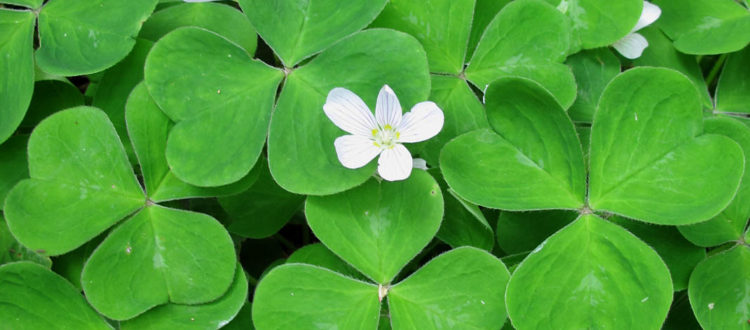OXALIS OREGANA – SHADE LOVING NATIVE GROUNDCOVER FOR THE PACIFIC NORTHWEST
Oregon Oxalis, aka Redwood sorrel (Oxalis oregana) is a perennial herb that is no more than 8 inches tall and LOVES the shade. It can perform photosynthesis with just 1/200th of the equivalent of full sunlight! It is often found under tree canopies in the shadow of bushes and brambles along with ferns, trillium, and wild ginger. It spreads by underground stems (rhizomes) to form soft green carpets of large clover-shaped leaves, which are said to be fire resistant.
Mostly a spring bloomer, it has white to pink flower buds, starting out cup-shaped and opening up to form stars that float above dark green heart-shaped leaves with a hint of purple underneath. After the flowers fade, small hairy egg-shaped fruits ripen and then explode seeds in every direction. It is a pollinator plant for native bees, syrphid flies, and butterflies. The blossoms are light colored so pollinators can easily see them in the shade. Later in the year, the seeds may be eaten by sparrows and small rodents.
This flower has a habit of folding down into little pyramid shapes to protect its delicate leaves when strong sunlight hits it. Within 10 seconds the naked eye can see the movement and within 6 minutes the leaves are pressed against the stem. Heavy rain can prompt the leaf-folding, as can a human touch. This action is known as nyctinasty, referring to the ability of a plant to open or close depending on light or darkness, day or night. A 10-minute lag follows after the relief of the disruption before the flowers are again fully open.
Native peoples in the Pacific Northwest would add this plant to dried fish and use the entire plant to make preparations for rheumatism and drawing out infection from wounds. Both the flowers and the leaves can be tossed into a salad where their mild, lemony, slightly acidic flavor adds a slight punch and a bit of color. Caution – This plant contains oxalic acid and If enough is eaten in one sitting, it may potentially become toxic – though because of the acidic flavor you probably wouldn’t want to eat that much at one time!
You can find this plant at native plant nurseries – and sometimes at other nurseries that stock native plants. It is relatively carefree and it seems it can never get too much rain – good in winters like this past one! It is hardy to USDA zones 7-9 and can bloom from spring to early fall. If it is happy, it can spread to become a large carpet so be sure you love it before you plant it in your garden.


